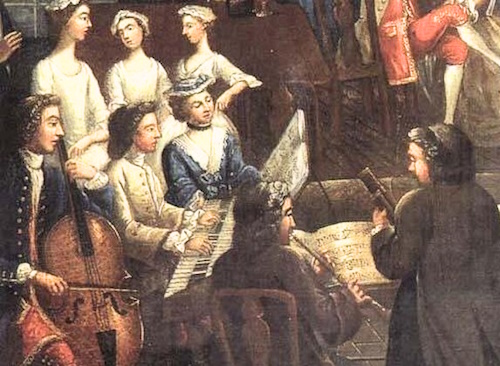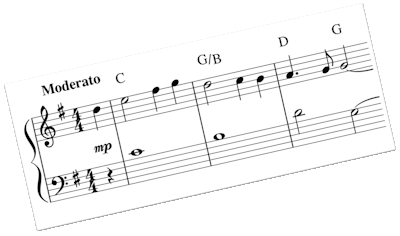Figured Bass – Introduction
Figured bass is a 17th-18th century system for notating improvised chords, which is used in modern times as a tool for music theory and analysis (so, its modern use is very different).
Figured bass originated as a system for notating chords, using numbers written with a bass line tune. The chords and bass line would usually be played on a harpsichord or similar keyboard instrument.


There would also be at least one additional upper part, which carries the tune, played by other instruments such as the violin or flute. The person playing the harpsichord would improvise an accompaniment to the melody, based on chords shown by the numbers, and the bass line itself.
Using a figured bass meant that the accompaniment could be improvised in a different way each time. Musicians could add their own style to their performance. It also cut down on printing costs (music was very expensive to print in Baroque times, as everything had to be engraved by hand).
You can think of figured bass as a sort of old-fashioned chord notation. Modern pop music is often printed with chord symbols (e.g. Gm). The players follow the chords on their guitar or piano, but play them in their own way (strumming, broken chords, and so on).

In modern times, the purpose of figured bass is different. It is used in music exams and music analysis as a way of identifying a chord by its inversion [1]. It is very rarely used for its original purpose anymore, because most modern keyboard players are not skilled at improvising from chord symbols.
How Figures Work
- Numbers are written under each bass note. These numbers are called “figures”.
- The figures tell you which other notes to include in the chord.
- The figures tell you which intervals to count above the bass, to work out each chord note.
- The three most common figures are 5/3, 6/3 and 6/4.
The next lessons will explain in more detail about each figure.
[1] Some figures show other harmony features, such as decoration or dissonances. We will look at these later on.